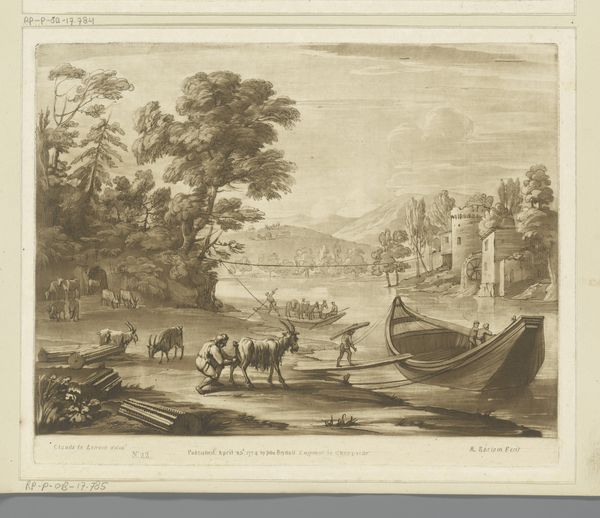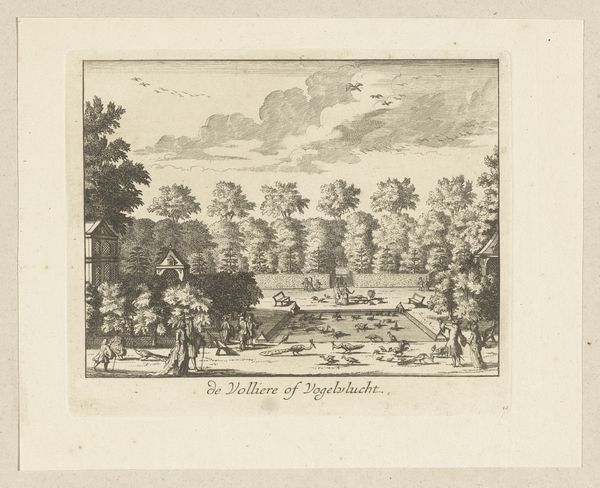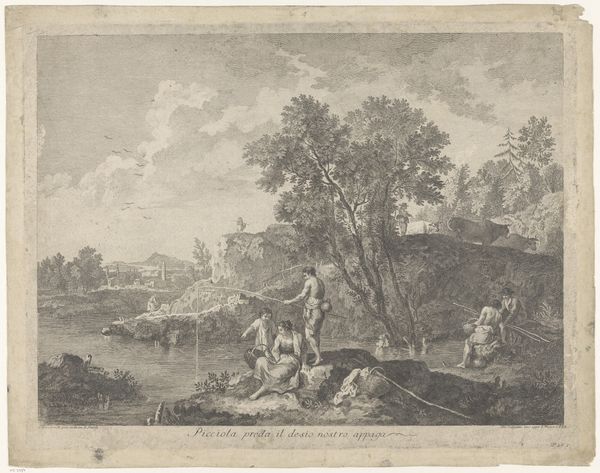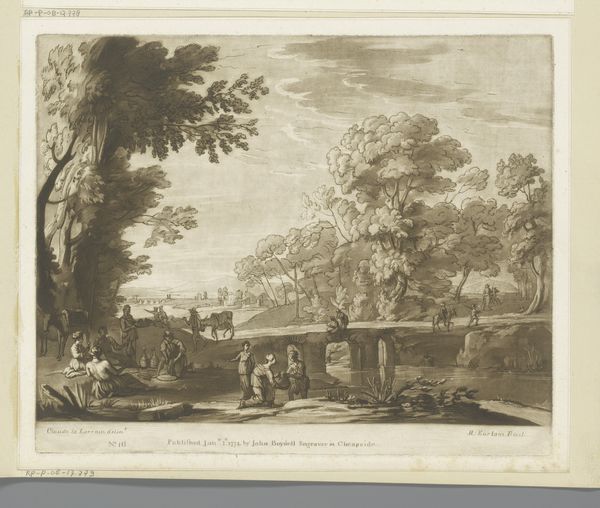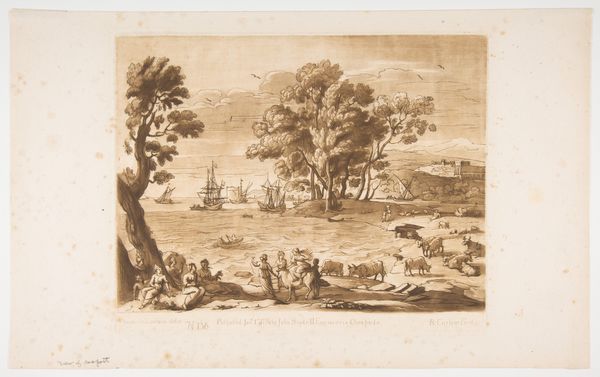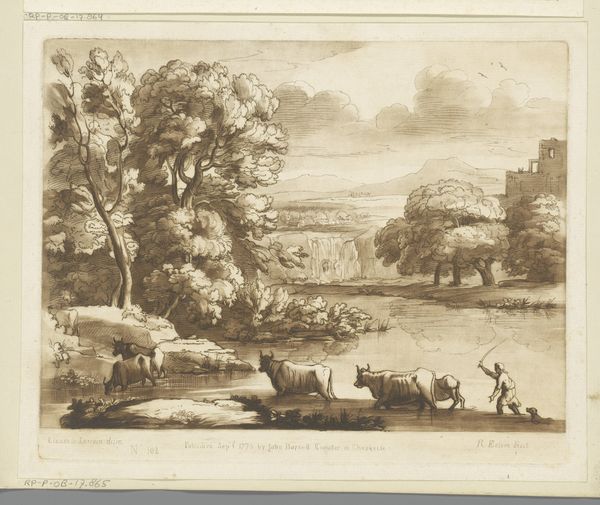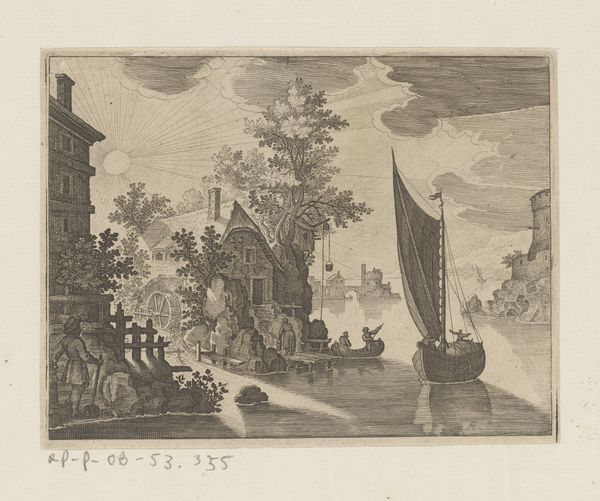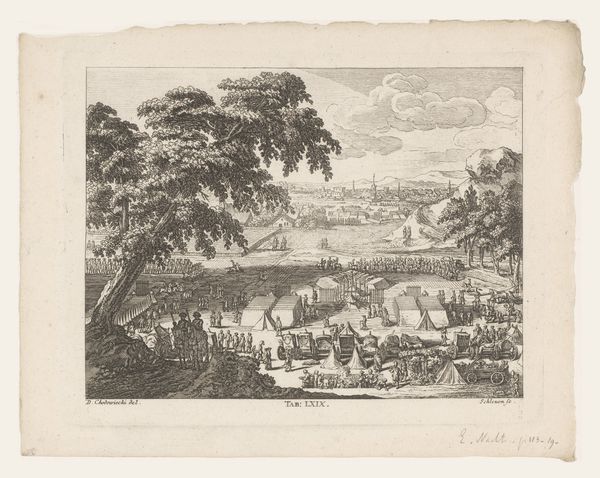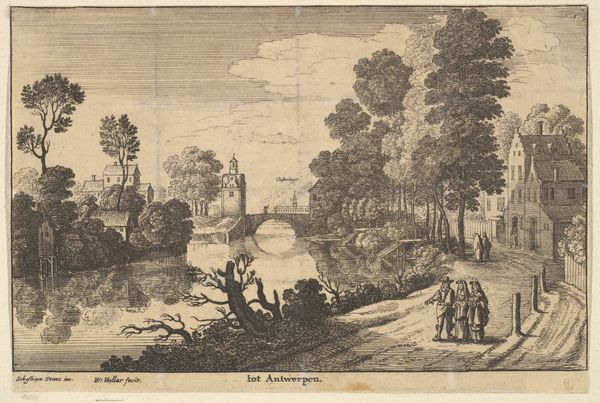
print, engraving
#
baroque
#
dutch-golden-age
# print
#
old engraving style
#
landscape
#
cityscape
#
engraving
Dimensions: height 232 mm, width 281 mm
Copyright: Rijks Museum: Open Domain
Editor: Here we have Cornelis Elandts's "Gezicht op Kasteel de Binckhorst te Den Haag," dating from 1681 to 1728. It's a fascinating cityscape rendered as a print. I’m really struck by the detail achieved through engraving. What stands out to you about this piece? Curator: It's the printmaking process itself that intrigues me. Consider the labor involved in producing this image: the craftsman meticulously etching lines onto a metal plate. Each mark reflects not only artistic skill but also a socio-economic reality. It shows that creating art wasn’t just the job of high skilled workers, but that a big portion of it was craftsmanship. How might the act of reproducing images like this have impacted artistic value at the time? Editor: That's interesting. I hadn't considered the repetitive labor, and it changes how I view this. You’re suggesting the process is as significant as the aesthetic. Were these prints widely distributed, therefore shaping perception and ideas beyond elite circles? Curator: Precisely. The medium’s inherent reproducibility challenges our romantic notions of the unique art object. And beyond that, think of the materials themselves – the inks, the paper. Where did they come from? Who produced them? Consumption is also a crucial aspect of it, how many of those prints were bought, by whom and why. It’s a window into a whole network of material production and exchange. Does it give you a different perspective? Editor: It certainly does. Thinking about the print as a product of labour and material, rather than just artistic expression, reveals so much about its historical context. It is quite insightful. Curator: Indeed, focusing on materiality allows us to unpack complex historical, economic, and social factors embedded within the image. I find the social context to be highly informative to analyse art. Editor: Thanks, this conversation has deepened my understanding. It makes me think about art and craftsmanship very differently now.
Comments
No comments
Be the first to comment and join the conversation on the ultimate creative platform.
